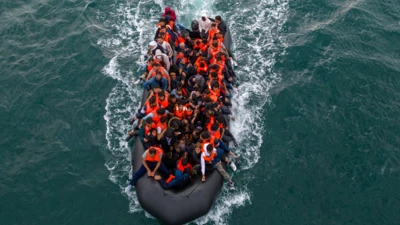We've updated our Privacy and Cookies Policy
We've made some important changes to our Privacy and Cookies Policy and we want you to know what this means for you and your data.
Kuril islands dispute between Russia and Japan
As Japanese Prime Minister Shinzo Abe holds talks in Russia with President Vladimir Putin, the ΒιΆΉΤΌΕΔ looks at the background to the long-standing territorial dispute between the two nations.
The island chain known as the Kurils stretches north across the Pacific Ocean from the Japanese island of Hokkaido to the southern tip of Russia's Kamchatka Peninsula.
Four islands - which Russia calls the Southern Kurils and Japan calls the Northern Territories - are the subject of a 60-year-old dispute between the two nations.
They are Kunashir (known in Japanese as Kunashiri), Iturup (Etorofu), Shikotan and the rocky Habomai islets.
The southernmost islet in the Habomai group lies only a few kilometres off Nemuro on the Japanese island of Hokkaido.
Because of the dispute, Russia and Japan have not yet signed a peace treaty to end World War II.
Deported
Japanese people migrated north to the islands in the 18th and 19th century, including members of Hokkaido's minority Ainu community.
In 1855, Russia and Japan signed the Treaty of Shimoda, which gave Japan ownership of the four southern islands and Russia ownership of everything to the north.
Communities developed on three of the islands and by the time World War II began, there were 17,000 Japanese residents.
Russia took control of the islands at the end of the war, and by 1949 it had deported all residents to Japan.
Under the 1951 San Francisco Peace Treaty, signed between the Allies and Japan, Japan renounced "all right, title and claim to the Kuril Islands", as well as over other possessions.
But this resolved nothing, because Russia did not sign the treaty and the Japanese government has never recognised the four islands as part of the Kuril chain.
In 1956, the Japan-Soviet Joint Declaration restored diplomatic ties between the two nations, but a formal peace deal remained out of reach because of the territorial dispute.
At the time, Russia proposed returning the two islands closest to Japan, a deal Japan rejected, in part because the two islands represent only 7% of the land in question.
Since then, the dispute has remained unresolved.
Natural resources
A 30,000-strong Russian community now lives on the islands and there is also a Russian military presence on Iturup.
In early August 2006, the Russian government backed a 17bn-rouble ($630m) plan to develop the entire Kuril island chain, including improving energy and transport infrastructure.
Chances of an early resolution to the dispute look slim.
Vladimir Putin indicated in 2004 that the offer of a return of the two southernmost islands was still on the table, but showed no signs of relinquishing the two larger islands.
Natural resources are part of the reason.
The islands are surrounded by rich fishing grounds and are thought to have offshore reserves of oil and gas. Rare rhenium deposits have been found on the Kudriavy volcano on Iturup.
Tourism is also a potential source of income, as the islands have several volcanoes and a variety of birdlife.
Meanwhile, the Japanese government has worked to maintain public awareness of the dispute.
Periodic visits by relatives of those displaced after the war to pray before their ancestral shrines have made the issue a highly emotive one for the Japanese public.
Top Stories
More to explore
Most read
Content is not available








